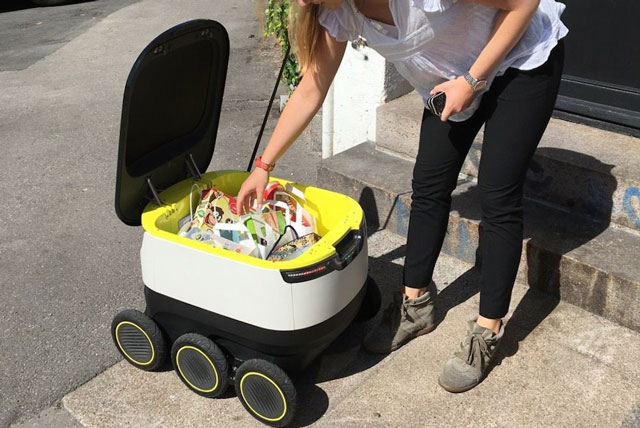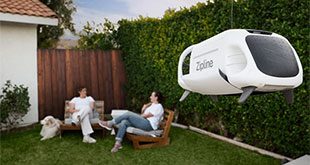
Washington, United States | AFP |
The robots of the future will be coming soon, rolling along at a lumbering pace with those goods you just ordered.
The six-wheeled, knee-high robots from startup Starship Technologies are part of a new wave of automated systems taking aim at the “last mile” delivery of goods to consumers.
Starship is launching a pilot project of robotic deliveries of parcels, groceries and prepared foods in early February in the US capital Washington, with a similar test taking place in Redwood City, California.
The startup, created by two of the founders of Skype, Ahti Heinla and Janus Friis, has already begun testing in several European cities as part of an effort to bring new efficiencies to local delivery.
The goal is to enable delivery within a radius of two miles (three kilometers) within 15-30 minutes of an order, for $1 or less, with the autonomous robots traveling on sidewalks and alerting consumers of their arrival via smartphone app.
Starship spokesman Henry Harris-Burland said the founders were looking to “disrupt” an industry which had seen little efficiency improvement from new technology.
“We’re trying to solve real social and economic problems,” Harris-Burland said during a demonstration of the delivery bots in Washington.
“This will take cars and vans off the road. We can also provide deliveries to the elderly and handicapped who have difficulty getting around.”
The company, which has its business office in London, engineering in Estonia and some 90 employees, announced in January it had raised $17.2 million, led by Daimler AG with other investors as it moves to expand its testing and partnerships.
While the Starship robots roll at a modest pace of around four miles (six kilometers) per hour, Harris-Burland said they offer a more efficient and economical delivery model than drones, which are being tested by online retail giant Amazon and others.
The rolling robots are far less expensive to build and operate than drones and face fewer regulatory issues.
He said drones might be better-suited to remote and rural areas, while the Starship bots are designed for cities and suburbs, where they can roll along on sidewalks.
“We don’t see these as competing with drones, we see it as complementary,” Harris-Burland said.
The Starship robots, which look like high-tech plastic picnic coolers, can carry about 20 pounds (nine kilograms) of goods, suited to three to four grocery bags. They do not offer heating or chilled compartments because rapid deliveries would not need them, according to Harris-Burland.
They will not have the capacity to leave items on doorsteps, he said, because “customers will get delivery within 30 minutes, when they are home” and collect the goods at the door.
– Mapping sidewalks –
Starship has agreements for testing with the delivery firm Postmates in Washington and DoorDash in California, as it works toward a commercial model with other partners and retailers.
When the pilot begins in February, consumers will be able to order pizza, toothpaste, milk or eggs through the services which may use humans or robots.
Starship is not the only robotic delivery startup looking to disrupt the sector.
California-based startup Dispatch has raised $2 million in venture funding to begin testing of its rolling robots. Another California firm, Savioke, has agreed to provide delivery bots to hotels and apartment complexes.
Starship says one of its strong points is its “visual localization” technology that allows for real-time mapping using nine cameras on each robot to help navigate along sidewalks and circumvent obstacles, people and pets.
“We can see every crosswalk, every traffic light, every pothole,” Harris-Burland said.
“A lot of companies have mapped roads but no one has mapped sidewalks.”
The navigation is done by artificial intelligence, and the bots are “99 percent autonomous,” according to the spokesman.
“We want a human being able to oversee the robot’s journey and to intervene whenever there is a problem,” he said.
Harris-Burland said the company’s tests so far in Europe have shown the system works, with no problems related to theft or vandalism.
The lids of the devices are locked until the customer opens it with a smartphone. If anyone tries to steal it, an alarm will sound, and if it is hijacked the company can track it “to the nearest inch,” he said.
 The Independent Uganda: You get the Truth we Pay the Price
The Independent Uganda: You get the Truth we Pay the Price



